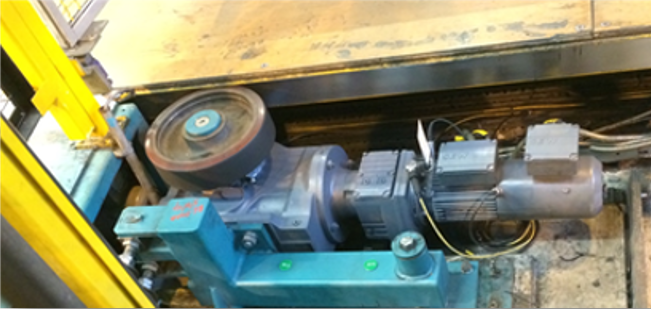
Assembly line drives in the automotive industry
This case study describes the online condition monitoring of production-critical assembly line drives in the plant of a major UK car manufacturer.
The assembly line conveyor system transports the cars on platforms through the various stages of assembly. The drives operate in very short time cycles, where they start, then clang to a stop every 6-8 seconds. The very short data acquisition window and mechanical disturbances required some optimization to find the best measurement setup for these drives. The system uses post triggers, a relatively high Fmax, and short measuring times to manage these complicating factors.
The assembly line drives are monitored with the Intellinova Compact online system, measuring vibration and shock pulse levels using HD technology. A proximity switch ensures accurate speed, which is essential for SPM HD measurements.
The motors run at 2300 RPM and the output of the helical bevel gearboxes runs between 6 and 18 RPM.
An unplanned stop caused by an equipment failure on the assembly line drive units would cause a loss of production of 35-45 cars per hour.
Download full case study
Case Study
CS024 - Automotive assembly line drives| Filename/description | Language | Size | Modified | |
|---|---|---|---|---|
| CS_024B_Automotive_assembly_line_drives_UK.pdf | English (United Kingdom) | 3 MB | 2/24/2020 | |
| Condition monitoring of assembly line drives in car plant by John Loane. | ||||
